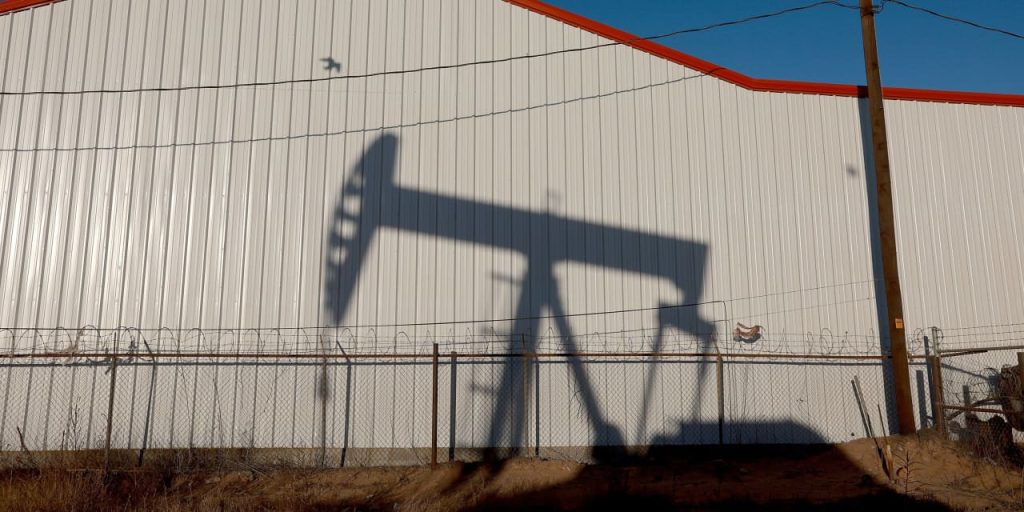Crude-oil futures settled lower for the first time in four sessions Thursday, with traders fretting over a possible shake-up in the Organization of the Petroleum Exporting Countries following Angola’s decision withdraw its membership from the group of oil producers.
Crude futures had already been under pressure after a buildup in U.S. petroleum supplies and record domestic production cooled a rally sparked by disrupted shipments in the Red Sea.
Price action
-
West Texas Intermediate crude for February delivery
CL00,
-0.45%CL.1,
-0.45%CLG24,
-0.45%
fell 33 cents, or 0.4%, to settle at $73.89 a barrel on the New York Mercantile Exchange but ended off the session’s low of $72.44. -
February Brent crude
BRN00,
+0.05%BRNG24,
the global benchmark, lost 31 cents, or 0.4%, at $79.39 a barrel on ICE Futures Europe. -
January gasoline
RBF24
shed 1.9% to $2.16 a gallon, while January heating oil
HOF24,
-0.75%
fell 0.4% to $2.70 a gallon. -
Natural gas for January delivery
NGF24
settled at $2.57 per million British thermal units, up 5.1%.
Market drivers
Angola’s oil minister, Diamantino de Azevedo, announced Thursday the withdrawal of his country from OPEC, according to state-controlled news agency Angop. He said that Angola would not gain anything by remaining in the organization.
Read: Angola leaves OPEC, raising questions about ‘unity and harmony’ within oil cartel
News that Angola is leaving OPEC lifted concerns that there might be “growing pressure within the OPEC cartel to raise production,” said Phil Flynn, senior market analyst at the Price Futures Group.
“On the surface Angola leaving OPEC is not that big of a deal because they can barely pump their oil quota,” he said in a daily report. However, the concern is that “Angola’s departure might signal some underlying tension with the fact that the cartel is losing market share to non-OPEC producers and mainly the United States.”
Also read: Why 2023 was a tough year for commodities even as gold and orange-juice prices hit records
In a weekly report released Wednesday, the Energy Information Administration said U.S. petroleum production marked a climb to another record high at 13.3 million barrels a day.
On Thursday, however, Baker Hughes
BKR,
-0.06%
reported a third straight weekly decline in the number of active U.S. rigs drilling for oil, implying an upcoming fall in output. That number fell by three to 498 this week.
Read The Year Ahead: Why oil may not see a return to $100 a barrel in 2024
Several shipping companies have suspended shipments through the Red Sea after a series of drone and missile attacks by Iran-backed Houthi rebels since the start of the Israel-Hamas war. The U.S. earlier this week announced a naval coalition would move to halt the attacks.
“We think oil passing through the Red Sea could ultimately be rerouted through other shipping channels, albeit at a longer distance and higher cost,” said Rodney Clayton, portfolio manager at Duff & Phelps Investment Management. “Disruptions at the Strait of Hormuz, on the opposite side of the Arabian peninsula, would pose a much bigger risk, as it allows for roughly 20% of global supply to pass.
“In general, the abundance of geopolitical conflicts today place an upward bias on the price of oil,” he told MarketWatch.
Read: Attacks in the Red Sea add to global shipping woes
Looking ahead, trading volume in oil is likely to lighten, said Tariq Zahir, managing member at Tyche Capital Advisors.
The situation for oil has “not really changed much, with cuts by OPEC announced and potential slowing of the U.S. economy battling each other for the next direction of crude oil,” he told MarketWatch. Zahir also said he does not believe it’s a big deal “at all” that Angola is reportedly leaving OPEC.
As the energy market begins a new year, Zahir said prices may start a move higher, albeit “slowly and possibly choppy.”
Brent and WTI rose for a third straight session Wednesday, ending at their highest since Nov. 30 but below session highs after the EIA reported a rise in U.S. crude, gasoline and distillate supplies last week.
Separately Thursday, the EIA reported that U.S. natural-gas supplies in storage fell by 87 billion cubic feet for the week ending Dec. 15 — slightly more than the 83 billion-cubic-foot decline forecast by analysts surveyed by S&P Global Commodity Insights.
Read the full article here
